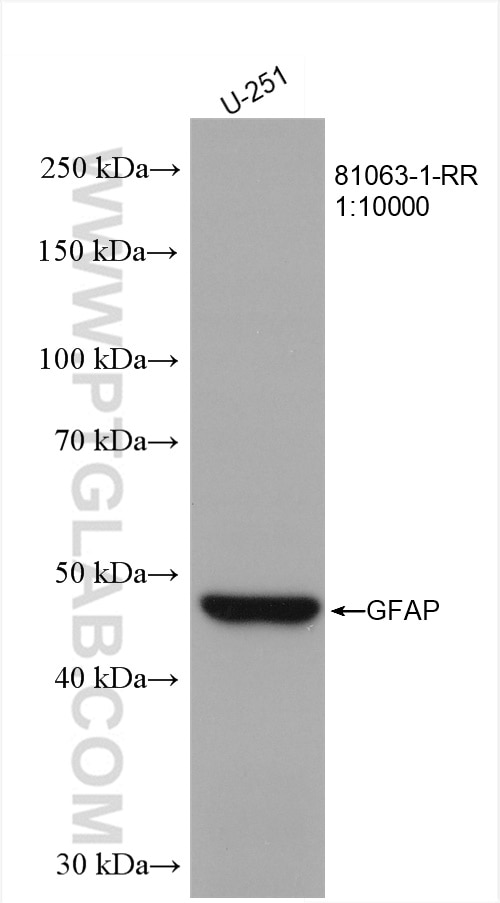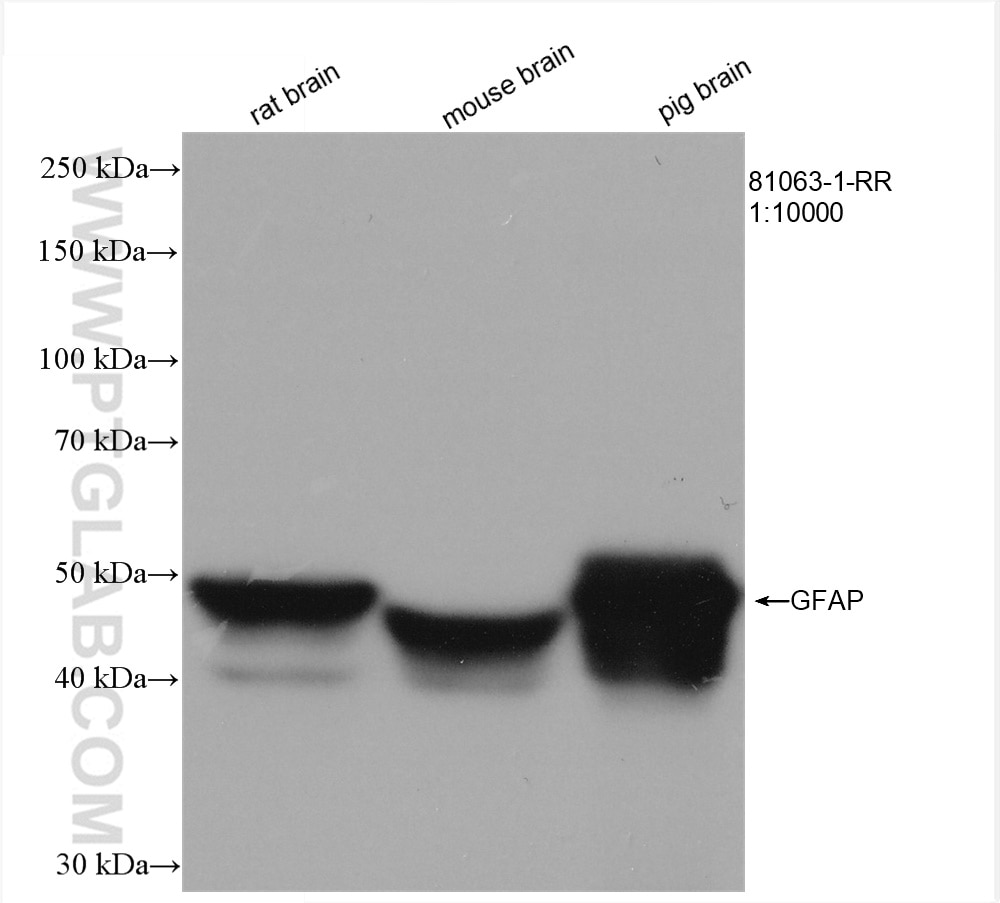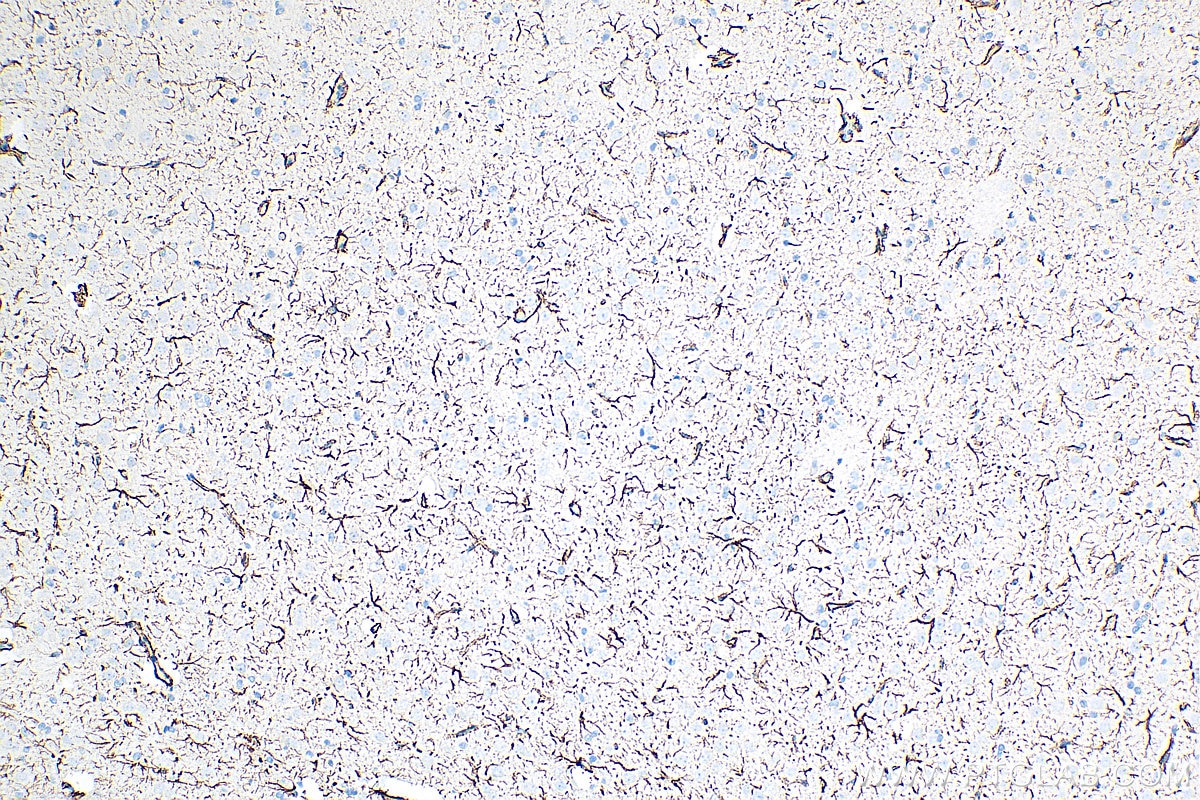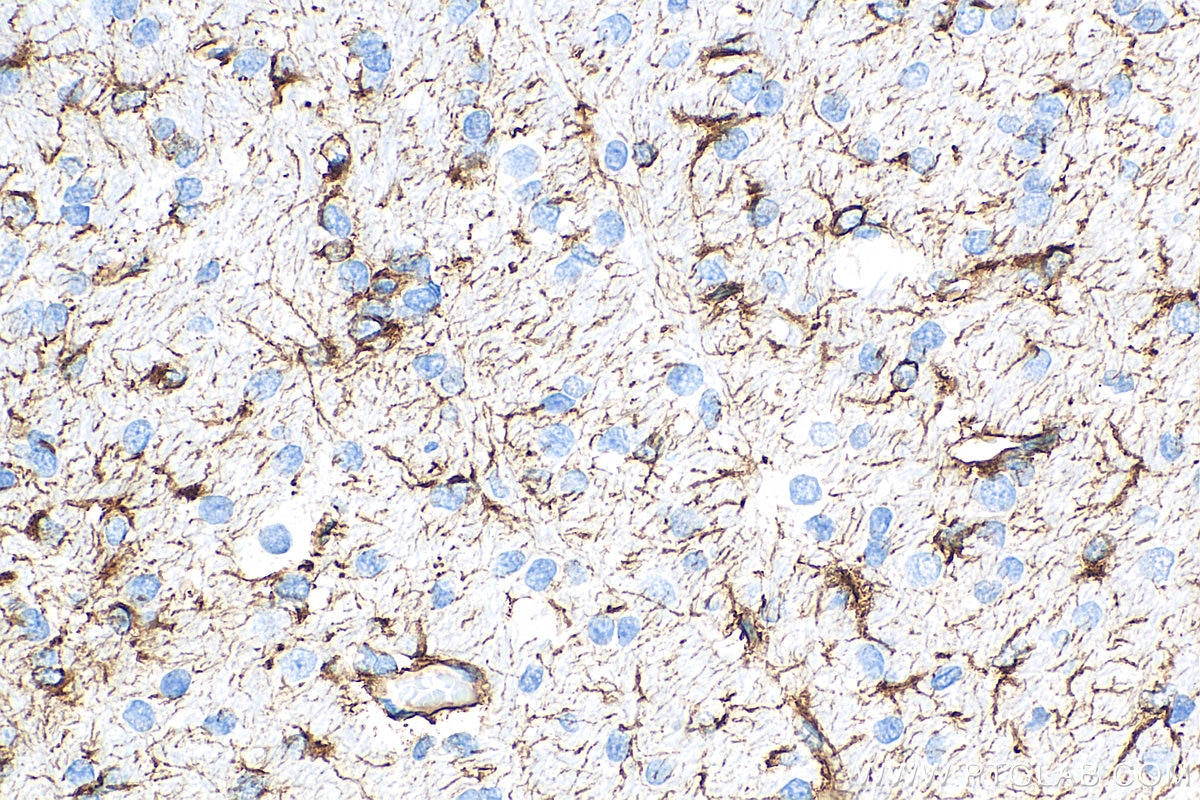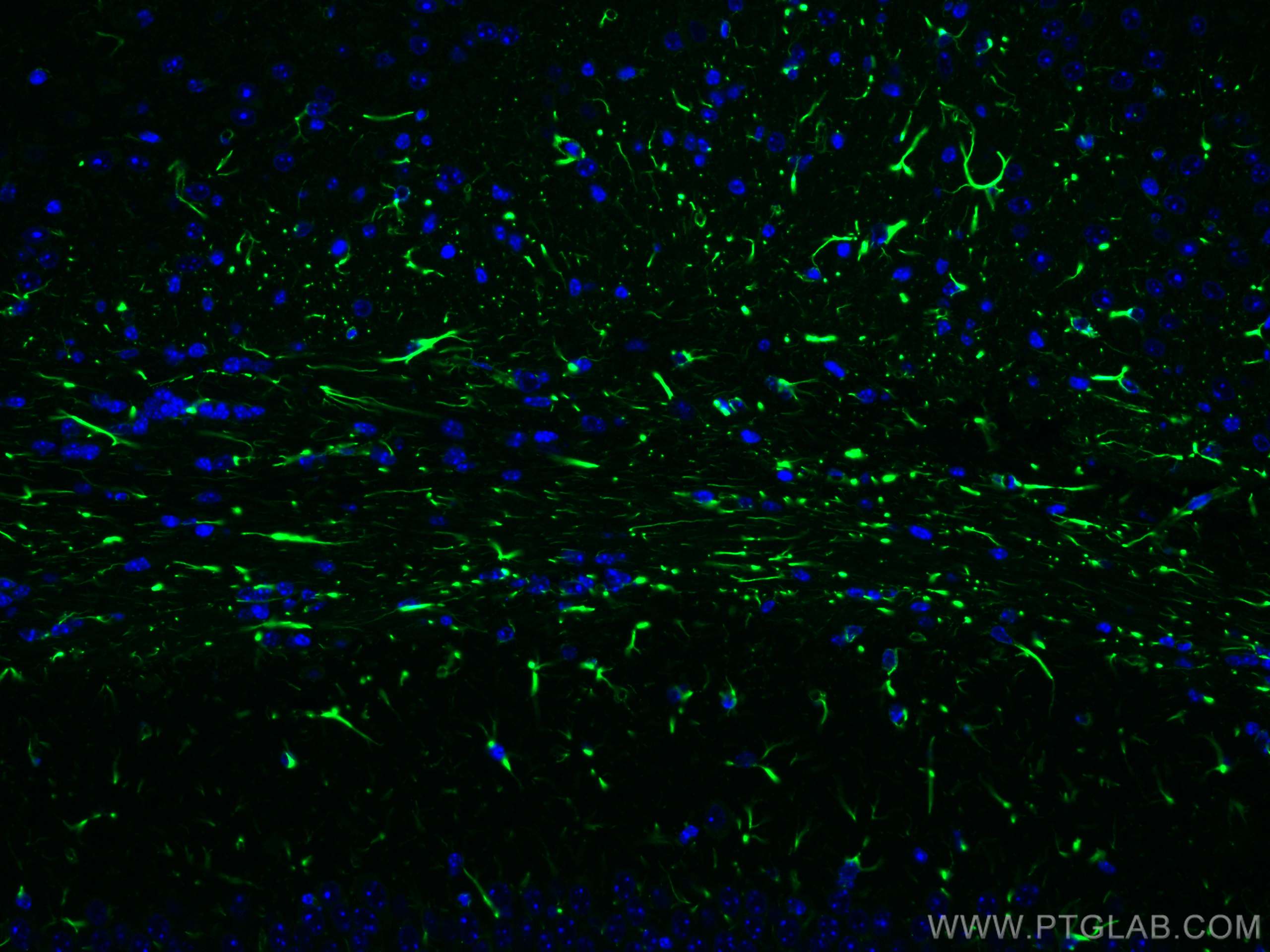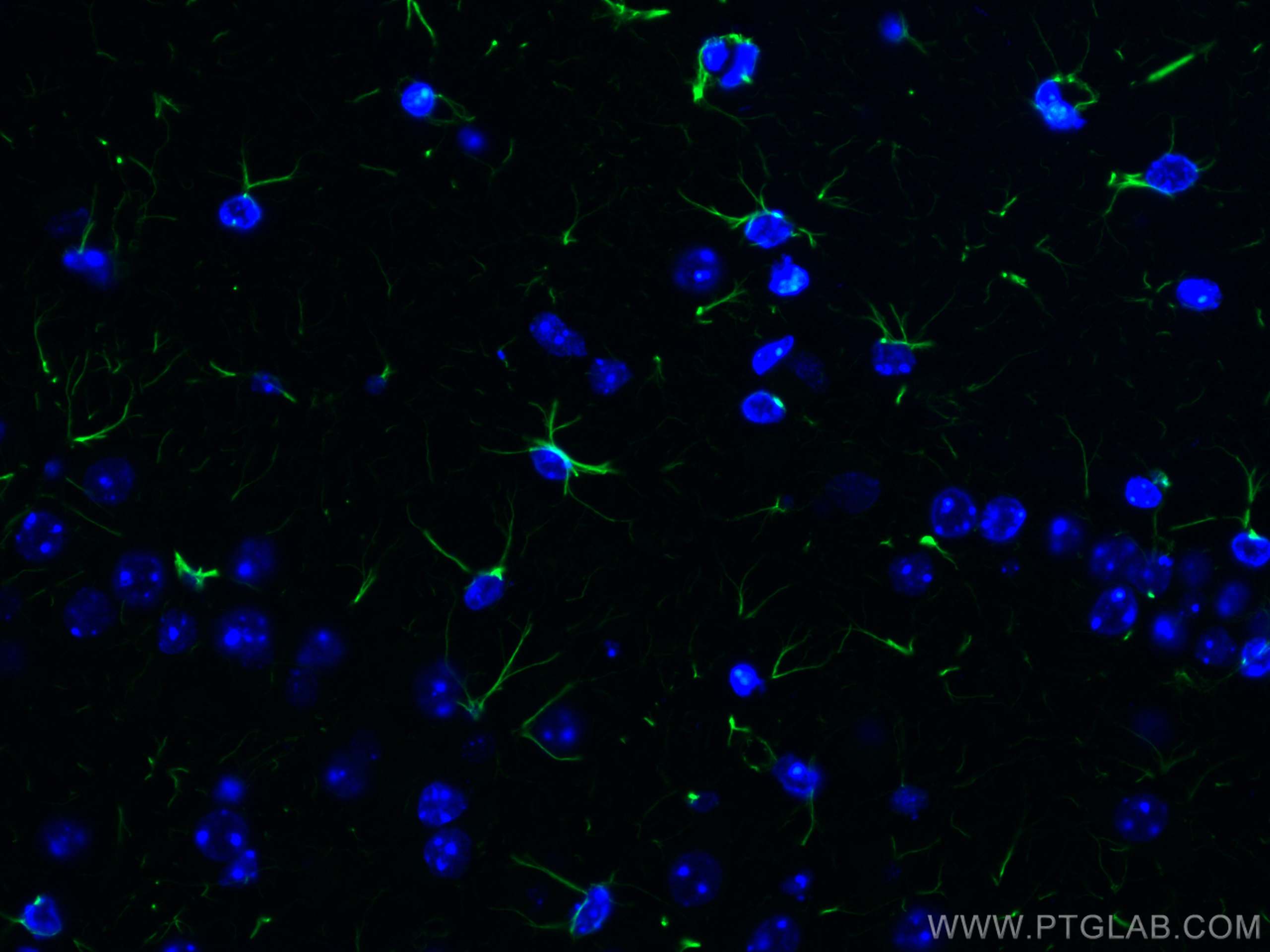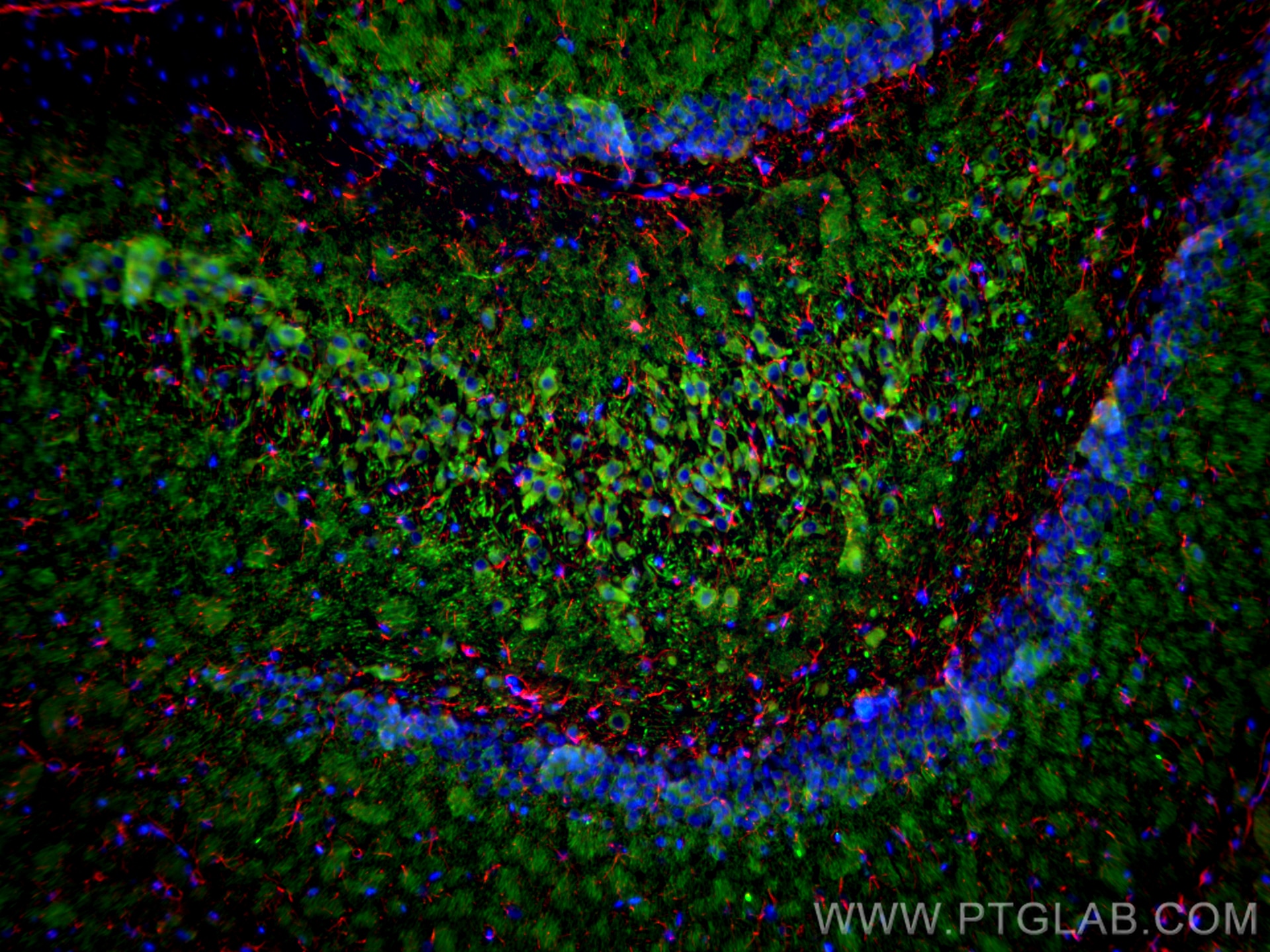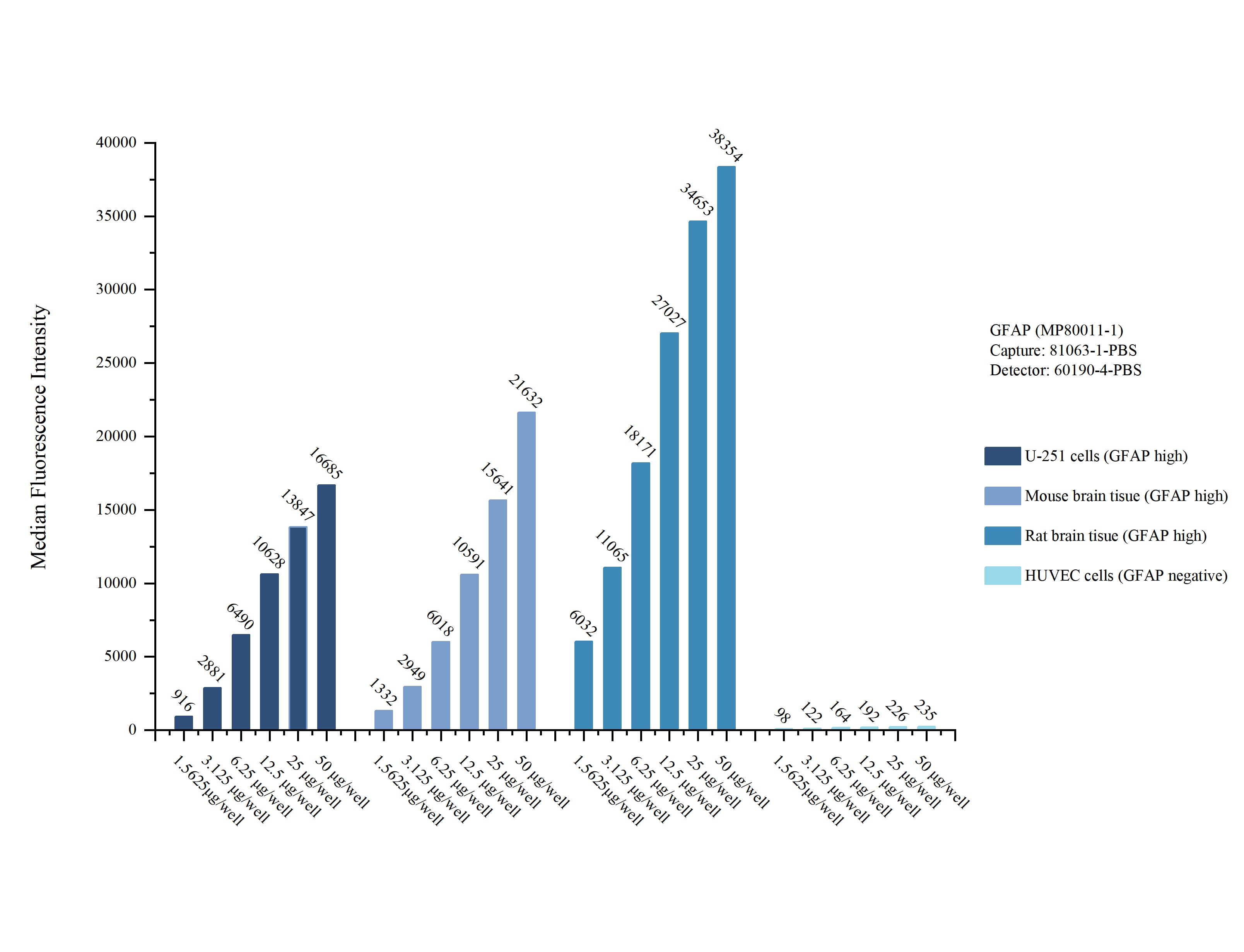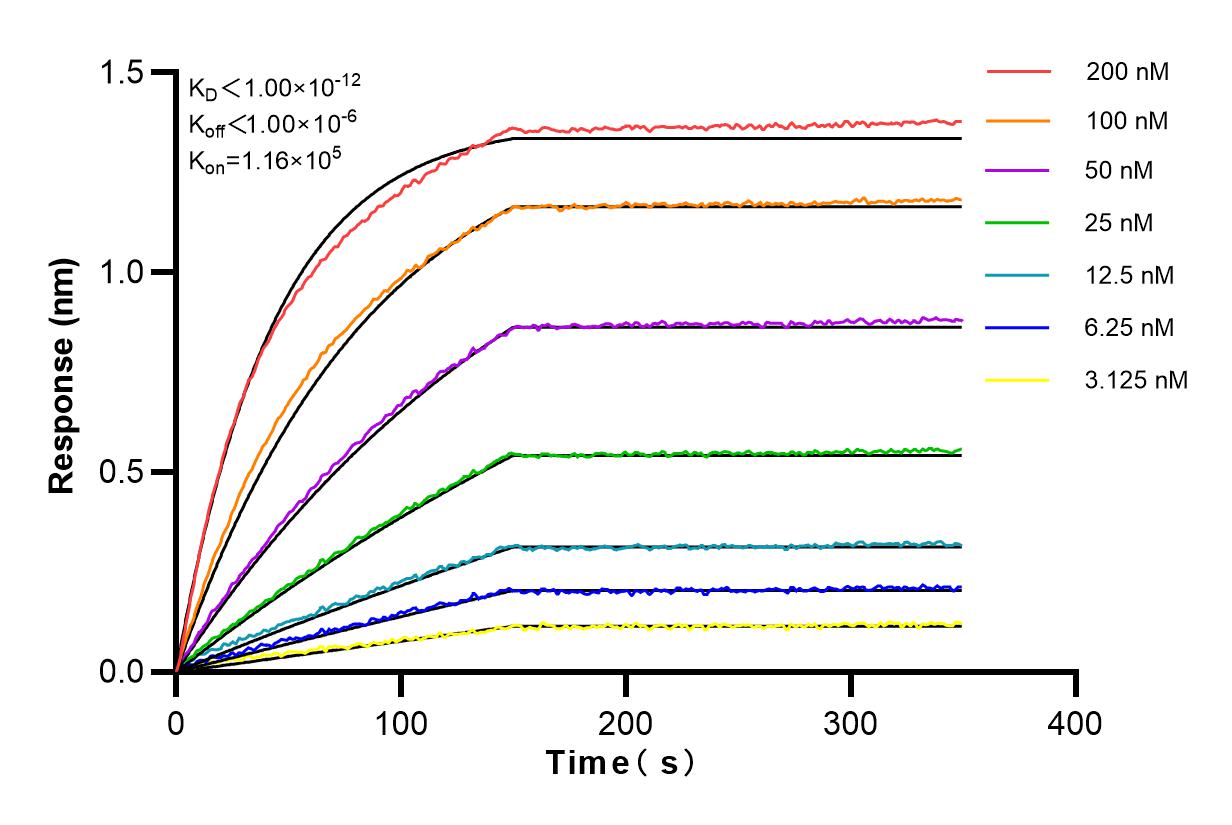- Phare
- Validé par KD/KO
Anticorps Recombinant de lapin anti-GFAP
GFAP Recombinant Antibody for WB, IHC, IF-P, IF-Fro, Cytometric bead array, Indirect ELISA
Hôte / Isotype
Lapin / IgG
Réactivité testée
Humain, porc, rat, souris
Applications
WB, IHC, IF-P, IF-Fro, Cytometric bead array, Indirect ELISA
Conjugaison
Non conjugué
CloneNo.
4C6
N° de cat : 81063-1-PBS
Synonymes
Galerie de données de validation
Applications testées
| Résultats positifs en IHC | tissu cérébral de rat, il est suggéré de démasquer l'antigène avec un tampon de TE buffer pH 9.0; (*) À défaut, 'le démasquage de l'antigène peut être 'effectué avec un tampon citrate pH 6,0. |
Dilution recommandée
| Application | Dilution |
|---|---|
| Immunohistochimie (IHC) | IHC : 1:5000-1:20000 |
| It is recommended that this reagent should be titrated in each testing system to obtain optimal results. | |
| Sample-dependent, check data in validation data gallery | |
Applications publiées
| IHC | See 1 publications below |
Informations sur le produit
81063-1-PBS cible GFAP dans les applications de WB, IHC, IF-P, IF-Fro, Cytometric bead array, Indirect ELISA et montre une réactivité avec des échantillons Humain, porc, rat, souris
| Réactivité | Humain, porc, rat, souris |
| Réactivité citée | Humain |
| Hôte / Isotype | Lapin / IgG |
| Clonalité | Recombinant |
| Type | Anticorps |
| Immunogène | GFAP Protéine recombinante Ag10423 |
| Nom complet | glial fibrillary acidic protein |
| Masse moléculaire calculée | 432 aa, 50 kDa |
| Poids moléculaire observé | 45-50 kDa |
| Numéro d’acquisition GenBank | BC013596 |
| Symbole du gène | GFAP |
| Identification du gène (NCBI) | 2670 |
| Conjugaison | Non conjugué |
| Forme | Liquide |
| Méthode de purification | Purification par protéine A |
| Tampon de stockage | PBS only |
| Conditions de stockage | Store at -80°C. 20ul contiennent 0,1% de BSA. |
Informations générales
GFAP (Glial fibrillary acidic protein ), an intermediate-filament (IF) protein , is specifically expressed in cells of astroglial lineage and is widely used to mark astroglia in the brain. It is also used as a marker for intracranial and intraspinal tumors arising from astrocytes.
